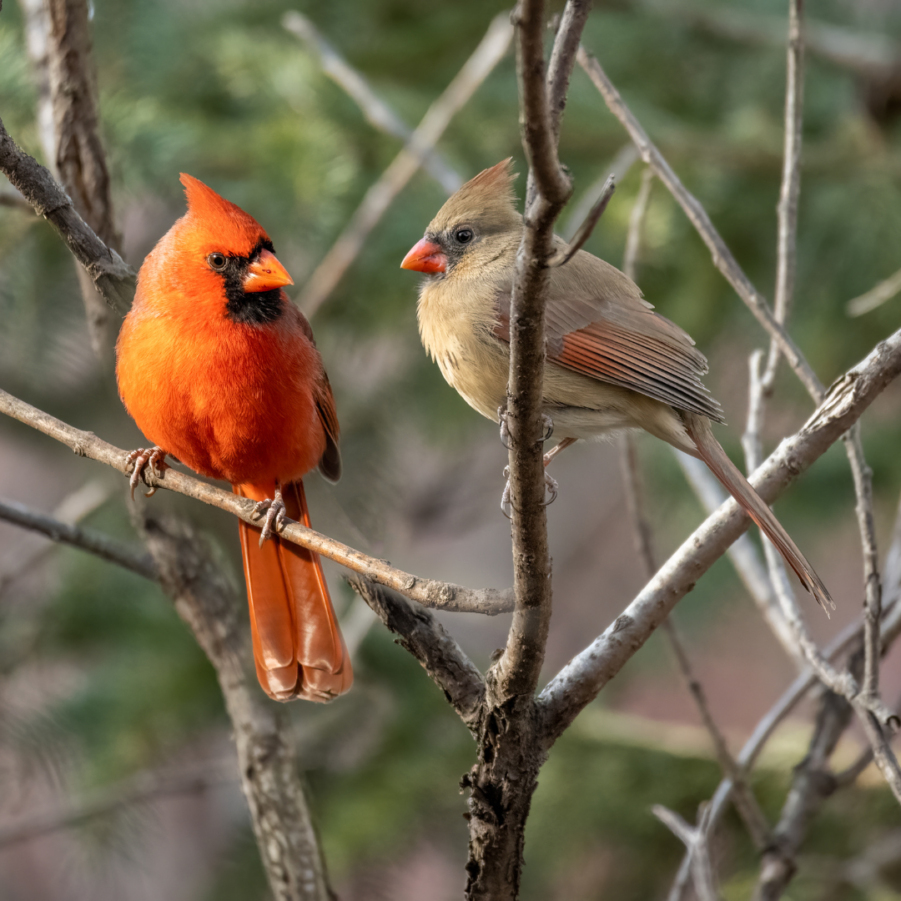Often a symbol of winter cheer, cardinals have become famous for their brilliant, bright-red plumage and showy bills. These birds are a common sight in backyards of Eastern North America and are often a welcome visitor at birdfeeders. If you’ve got cardinals in your own neighborhood, or simply want to know more about them, then you’re in luck. In this Wildlife Spotlight post, we’ll learn 9 facts about cardinals and cover the basics of what makes them special.
Cardinals 101
The bird that most people call “cardinal” is the Northern cardinal (Cardinalis cardinalis), a medium-sized American songbird. They are somewhere between an American robin and a sparrow in size. Cardinals are generally tolerant of human presence, and have become one of the typical common backyard birds of North America. They belong to a group of birds known as passerines (order passeriformes), the perching birds. Within that group, they belong to a subgroup known as the oscines, or songbirds.
12 common backyard birds of the Eastern US
How to identify a cardinal
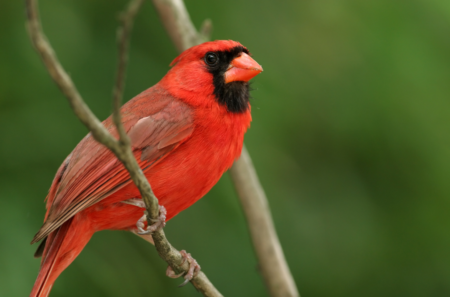
These vibrant birds are hard to miss! Male cardinals have intense red plumage all over their bodies, with a black “mask” around their lower face and bill. Females are a greenish or yellowish tan, with pink or reddish tinges to their feathers at the extremities. Their underwings can be especially beautiful, with a blend of orange, salmon, and pink colors! The bills of both sexes are large and conspicuous, being bright orange in color.
Cardinals also have a cool and stylish hairdo. Both male and female cardinals have a pointed crest of feathers atop their heads, which they can raise and lower depending on their mood. Think of it like the way you use your eyebrows to express your feelings!
Tips for identifying birds in your back yard
Another helpful way to identify cardinals is by their vocalizations. Both sexes give a sharp, distinctive “chip” call at all times of year. During the breeding season, males sing frequently from a high and exposed perch to advertise their territory. Although they have a diversity of regional accents, their songs can be relatively consistent. A cardinal’s song typically starts with paired, downward whistles, followed by a quicker succession of upward chirps. The song ID function of the Merlin App can be a great help in learning birdsongs if you’re new to them.
Fancy some audible content on these neat birds? Check out this episode from the Nature Guys Podcast below!
Where do cardinals live? (What makes cardinal habitat?)

Cardinals occupy a variety of forest edge and shrubland habitats. In general, they seem to like forest understory and lower vegetation like shrubs and smaller trees. They do not often use the forest canopy, and become scarce in deeper forest interiors. Their love of shorter vegetation may be part of why you’re more likely to encounter a cardinal in an urban or suburban setting.
Check out this post to learn how naturalists describe different habitats
What do cardinals eat?
Cardinals are big-time seed-eaters! As with many other birds, the structure of their bill (or beak) is a dead giveaway. Their robust, conical bill means that they can access and crack open larger seeds than many other seed eaters. In fact, their diet can consist of upward of 90% seeds, grains, and fruits from herbaceous plants. For example, goldfinches, which are also notorious suburban seed eaters, can’t handle seeds as large as those that cardinals do.
The best field guides for birds in Eastern North America
9 facts about cardinals
1. They are named after officials of the Roman Catholic Church
If you come across these birds in the wild, you can’t miss the bright red plumage on the males. Even the more subtly colored females have some dazzling pinks and reddish hues here and there! This color was not lost on early naturalists, who named these birds after senior members of the Catholic church. Cardinals wear red robes and wide-brimmed hats, and are appointed by the pope.
You may recognize their outfits from Monty Python’s famous sketch, “No one expects the Spanish inquisition!”
2. There are several different kinds of cardinals
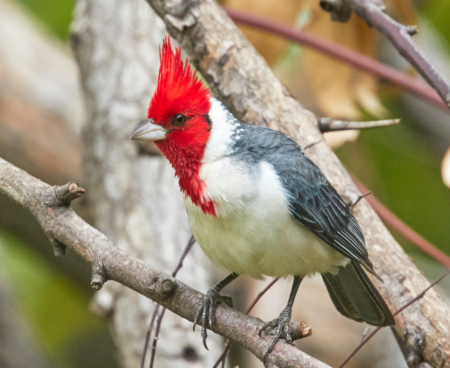
While the Northern cardinal of North America is the most among them, there are in fact several species of birds that fit the name. Six tropical species in the tanager family Thraupidae are also called cardinals. These belong to the genus Paroaria. Unlike the familiar Northern cardinal, these are restricted to South America and the Southern Caribbean.
Other cardinals include closely related cousins of the Northern cardinal that belong to the genus Cardinalis. These include the Pyrrhuloxia or desert cardinal (Cardinalis sinuatus) and the Vermilion cardinal (Cardinalis phoeniceus). You might find the first of these in the desert Southwest of the US and Mexico, while the latter occurs only in a few small patches of coastal Northern South America.
Read more: Why do species have scientific names?
3. Cardinals were once rare in much of Eastern North America
Although cardinals are extremely common in much of the Eastern US and Southeastern Canada, that wasn’t always the case. In fact, until the last century, Northern cardinals were a relatively rare sight outside of the American Southeast. As we learned above, cardinals prefer forest edges and shrublands. These habitats were not particularly common in the North during the 19th and early 20th centuries. At the same time, winter food sources were relatively rare.
Landscape change due to reforestation and suburbanization, combined with the rising popularity of birdfeeders, totally changed the game. With abundant food during the Winter and better habitats to nest in, cardinals had an easy time spreading Northward. This led to their widespread range and increasing popularity today!
4. You can find cardinals in Hawai’i
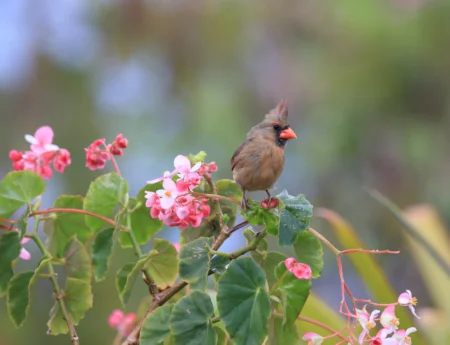
Are you lucky enough to be headed to the aloha state? Keep an eye out for cardinals! Even though they aren’t native to the region, three different types of cardinals are now common on several Hawaiian Islands. These species birds were introduced as part of the pet trade before there were stricter regulations. Enough escapees made it out into the wild to establish themselves as part of the wild bird communities there!
Depending on which island you’re on, you could see the Northern cardinal, red-crested cardinal (Paroaria coronata), or yellow-billed cardinal (P. capitata).
Why are invasive species a problem?
5. Half-male, half-female cardinals show up occasionally
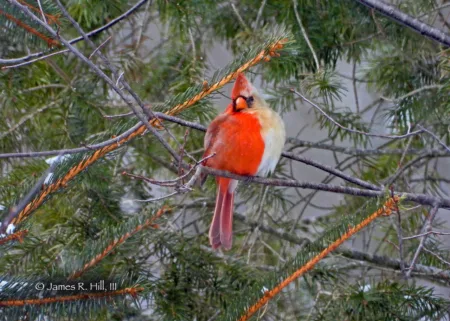
A rare genetic condition leads to what scientists call bilateral gynandromorphy, where half of an organism’s body has characteristics of one sex, and the other half from the other. Probably because cardinals are sexually dimorphic, it’s especially obvious when this rare condition occurs. Combined with how often we encounter these birds in our everyday lives, we’re more likely to witness this rare phenomenon with this species.
6. They can have serious bad hair days
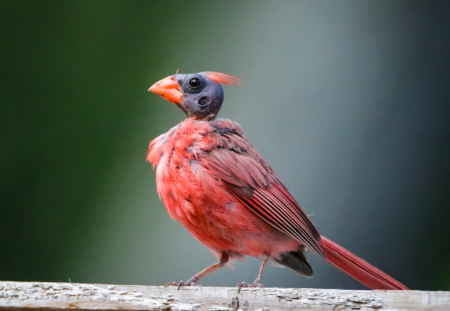
All birds will regularly shed their older, worn feathers to don new ones every year or so. These new feathers better protect them or are prettier for displaying to potential mates or rivals at certain times of year. This behavior, called molting, helps birds keep their feathers fresh and in effective condition. Typically, birds shed their feathers a couple at a time over a longer period, so it’s not a particularly noticeable change.
By contrast, species like blue jays and cardinals may occasionally shed all of the feathers on their head at the same time. The result? A glimpse at what birds look like without feathers. As you might imagine, it’s not exactly pretty. Birdwatchers have reported spotting bald cardinals around their homes with great alarm, fearing that the birds had contracted a harmful disease. Fortunately, this is not the case, and most bald cardinals are just going through a bit of an ugly phase. Cut them some slack!
7. They get much of their color from their diet of seeds

It might be reasonable to ask, where do cardinals get all those fancy colors? As with flamingos and other brightly colored birds, those colors have to come from somewhere. In the case of cardinals and many other fruit and seed-eating birds, these come from pigments called carotenoids. Although the process can get a little complicated, cardinals need to get these and related nutrients from their food to maintain their gorgeous red plumage.
This is especially important, because it can make the quality and vibrance of a male’s plumage what scientists call an “honest signal” of the male’s health and well-being. This allows females to assess their mates and choose ones that they think will more likely help them successfully raise healthy young. If a male has a better diet, he has pretty feathers. If he has pretty feathers, he must be healthy and have established a good territory with high quality available food!
Interestingly, invasive plants and birdfeeders seem to be providing foods that artificially boost the quality of cardinals’ colors. As a result, many male cardinals can look super impressive to females without needing to be super healthy or have a good territory! Research suggests that this may disrupt cardinals’ typical methods for selecting a mate.
8. Both males and females may sing and dance!

Last year while walking into my office on the UGA campus, I heard a cardinal sitting and spotted him perched atop a shrub. As I got closer, I noticed something unusual: it was a she, not a he! I saw that cardinal singing from a nearby location every day for at least a week. This was surprising for me as a birdwatcher, given that male birds are more often the songsters.
Why do people find birdsong so relaxing?
As it turns out, cardinals are one species where females commonly sing. Researchers have found that female cardinals that are in a new mated pair may sing more often than more experienced females. Female cardinals may also perform the same courtship dances that males do. With a great voice and cool dance moves, male cardinals can be real Casanovas, but apparently their partners can also bring the heat!
9. About 1/3 of cardinals cheat on their partners
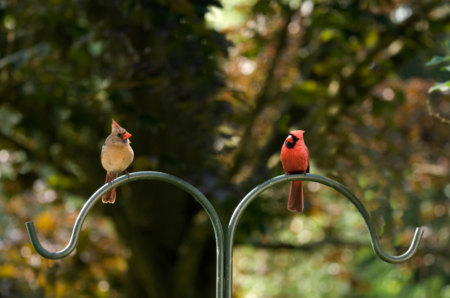
As with many other songbirds, cardinals are what is called socially monogamous. This means that they form social bonds with only one individual at a time, and raise young with that individual. However, that doesn’t necessarily mean that that individual is the parent of all of their offspring. Within a given clutch of eggs, field researchers have found that up to 1/3 of young can be fathered by a different cardinal! So even if everything looks neatly paired up with the cardinals in your neighborhood, there may be some shenanigans going on.
Thanks for reading!
Do you have a favorite animal you’d like to see get the Wildlife Spotlight at Gulo in Nature? Let us know in the comments! If you have additional questions or would like to get in touch, feel free to use the Contact Page. Please also follow us on social media and share with your friends to help support the blog!

